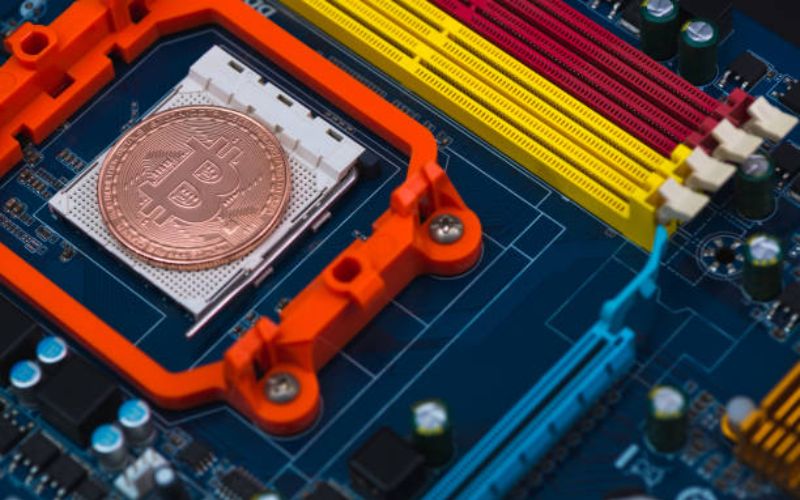The Advantages of Liquid Cooling Plates for Various Applications
Liquid Cooling Plates in Modern Technology: With the ever-increasing speed and capacity demands placed on electronics today, efficient thermal management is a top priority. One of the most effective and reliable ways to achieve this is with liquid cooling plates. This article will explore the various advantages of liquid cooling plates and their applications in different areas of technology.
Higher Thermal Conductivity
Efficient Heat Transfer: One significant advantage of liquid cooling plates is their high thermal conductivity, which allows for efficient heat transfer. Compared to air cooling, liquid cooling can dissipate heat more rapidly and consistently, making them an ideal solution for high-performance applications. Liquid cooling plates also have a larger surface area than conventional heat sinks, which makes them more effective at dissipating heat.
Customizable and Tailored Design
Flexibility in Design: Another advantage of liquid cooling plates is their flexibility in design. They can be customized to fit the specific requirements of a particular application. The design can be adjusted to accommodate different shapes, sizes, and configurations of hardware components. The plates can also be made of various materials, such as copper, aluminum, or stainless steel, depending on the application's requirements.
Noisy Cooling Reduction
Noise Reduction: Compared to traditional air cooling systems, liquid cooling plates are much quieter. This is because they use a liquid coolant that does not require high-speed fans to move the air but instead works by transferring the heat using a liquid. This benefits applications such as data centers, where noise levels need to be kept low.
Improved Energy Efficiency
Lower Energy Consumption: Liquid cooling plates can also reduce energy consumption compared to traditional air cooling systems. This is because liquid cooling plates use the thermodynamic properties of the liquid coolant to transfer heat away from the hardware, which is much more efficient than air cooling. As a result, energy costs can be significantly reduced.
Better Thermal Control and Management
Greater Thermal Control: Liquid cooling plates offer more precise thermal management, which can prolong the lifespan of electronic components. They enable better control over the temperature, which can be critical for the reliability of high-performance hardware. This makes them ideal for a range of applications, from gaming PCs to data centers and servers.
Increased Hardware Performance and Longevity
Hardware Optimization: Liquid cooling plates can significantly improve the performance and longevity of hardware components. By keeping them at a consistent temperature, they can prevent thermal throttling, which can slow down hardware performance, reduce its lifespan and cause damage to the device. In addition, the cooling plates' consistent cooling can extend the life of hardware components, ultimately saving money in the long term.
Higher Overclocking Potential
Optimized Overclocking: For hardware enthusiasts, overclocking is a great way to extract more performance from their devices. Liquid cooling plates make it possible to achieve higher overclocking speeds while keeping the hardware components at a safe temperature. Liquid cooling plates can maintain the temperature more consistently than air cooling, providing a stable and safe overclocking experience.
Easier Maintenance
Simplified Maintenance: Liquid cooling plates are easier to maintain than air cooling systems. They require less frequent cleaning, and leaks are much less common. In addition, liquid cooling systems are self-contained, which means they require less maintenance compared to traditional air cooling systems that require frequent cleaning and replacement of the air filters.
Greater Environmental Friendliness
Environmentally Sustainable: Finally, liquid cooling plates are more environmentally sustainable than air cooling systems, as they use the natural thermodynamic properties of the liquid coolant to transfer heat away from the hardware. This means that there is no need for the production and disposal of air filters, which can contribute to landfill waste. Liquid cooling plates can also reduce the energy consumption of electronic equipment, leading to a more eco-friendly operation.
Conclusion
In conclusion, liquid cooling plates offer a range of advantages for various applications, from gaming PCs to data centers. They provide efficient heat transfer, customizable design, quieter operation, increased energy efficiency, better thermal control, longer hardware lifespan, higher overclocking potential, simpler maintenance, and enhanced environmental sustainability. As technology continues to evolve at a breakneck pace, liquid cooling plates will continue to play an important role in thermal management for high-performance electronics.

